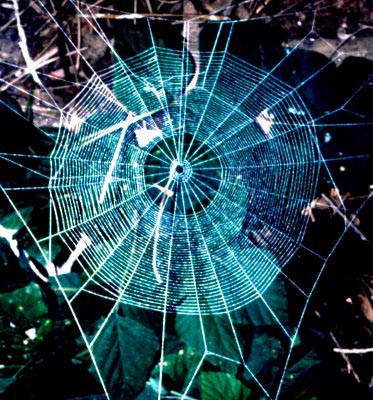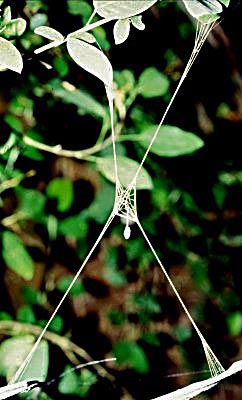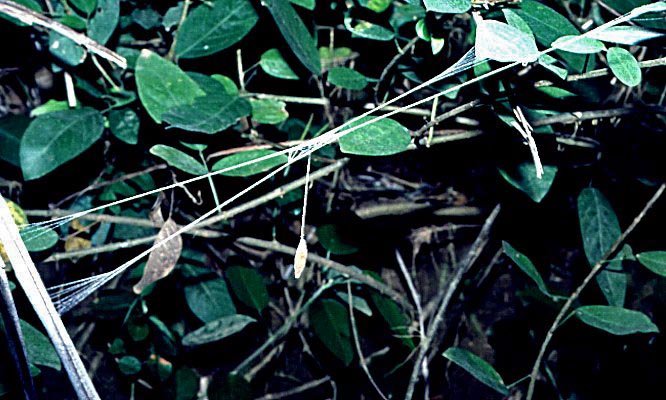|
A manipulative parasitic wasp
Back to spider home
William Eberhard (2000) describes an interesting relationship between a
female wasp parasite, Hymenoepimecis sp., (Ichneumonidae) and its spider host, Plesiometa
argyra (Araneidae). Although these species do not occur in southern
Africa, they illustrate an interesting instance where an insect parasitoid is
able to alter the behaviour of its spider host to the finest degree.
The orb spider is stung while on its web and is temporarily paralysed while
the wasp lays her egg on it. The spider then recovers and goes about its life
with the newly hatched wasp larva feeding on it by sucking its haemolymph
(spider "blood").
For about 7 to 14 days, the spider continues building its usual orb webs for
prey capture. However, in the evening of the night when it is to be killed by
its wasp parasite, the spider weaves a different web, designed specifically to
suit the purposes of the wasp. The wasp larva then moults, kills and consumes
the spider and
pupates, suspending itself safely from its custom-built cocoon web.

|

|
| Normal web of the orb-weaving spider. |
Cocoon web and wasp cocoon from above. |
 |
| Cocoon web and wasp cocoon from the side. |
| Images provided by W.
Eberhard ©, used with permission. |
The cocoon web is consistently made to the same pattern and deviations from
that pattern would be disastrous for the wasp larva. The cocoon web is a
simplified web and the sticky spirals and
multi-stranded cable and radial lines of the orb web are omitted. This
simplified cocoon web suspends the wasp pupa safely protecting it from various adverse
conditions. Vulnerability to heavy rains, for example, was observed in a related
wasp species.
The spider's change in behaviour is thought to be induced chemically rather
than by physical interference. The effect of
the stimulus is both rapid and long-lasting. Observations were made where the
wasp was removed earlier in the evening of the spider's final night and the
spider did not spin the cocoon web. The wasp was left and only removed later in
the evening and the spider was observed to proceed with the
construction of the cocoon web. When
the spider was allowed to survive, it continued to make the cocoon web the
following night and some spiders reverted to making more normal webs on
subsequent nights.
Reference
- Eberhard, W. G. 2000. Spider manipulation by a wasp larva. Nature
Vol. 406. 20 July: 255 - 256.
Text by Margie Cochrane |
